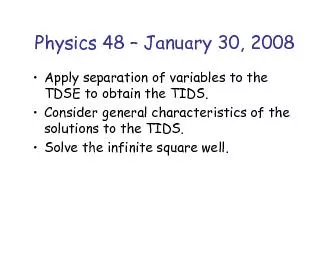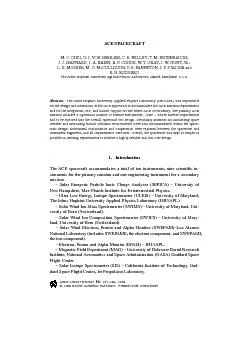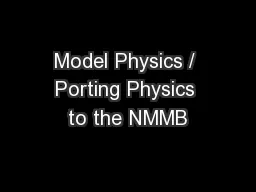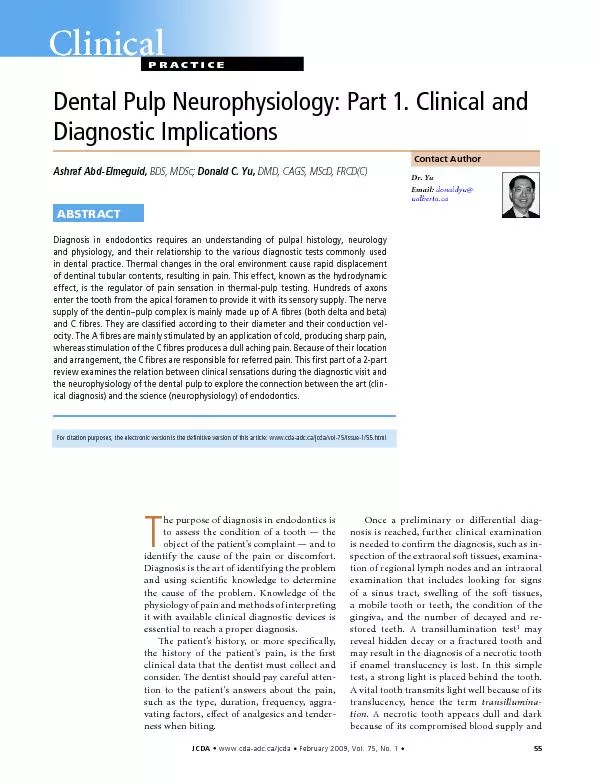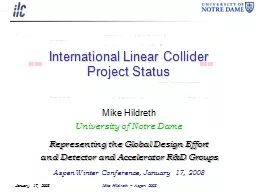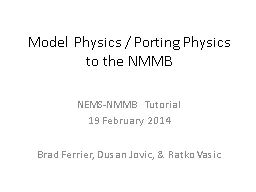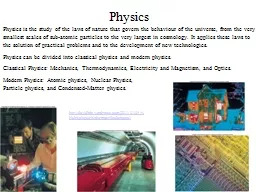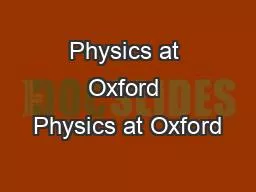PDF-Physics 48 –January 30, 2008
Author : elina | Published Date : 2021-04-14
149Apply separation of variables to the 149Consider general characteristics of the 149Solve the infinite square well x000E x Uxxti Solving the TDSE We assume that
Presentation Embed Code
Download Presentation
Download Presentation The PPT/PDF document "Physics 48 –January 30, 2008" is the property of its rightful owner. Permission is granted to download and print the materials on this website for personal, non-commercial use only, and to display it on your personal computer provided you do not modify the materials and that you retain all copyright notices contained in the materials. By downloading content from our website, you accept the terms of this agreement.
Physics 48 –January 30, 2008: Transcript
Download Rules Of Document
"Physics 48 –January 30, 2008"The content belongs to its owner. You may download and print it for personal use, without modification, and keep all copyright notices. By downloading, you agree to these terms.
Related Documents

